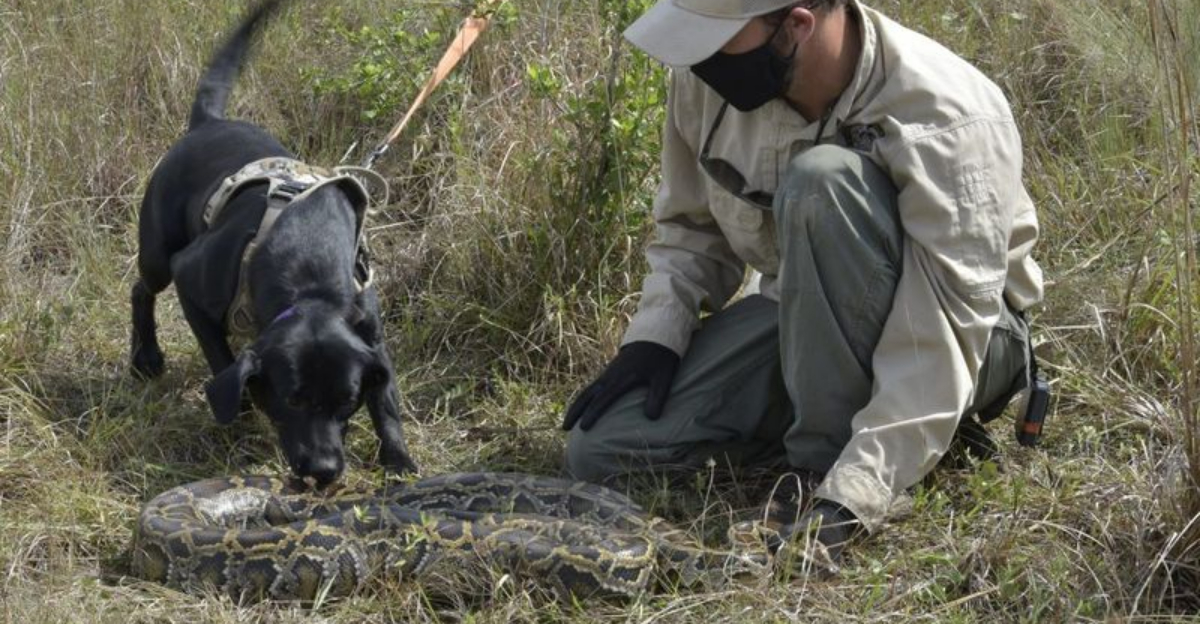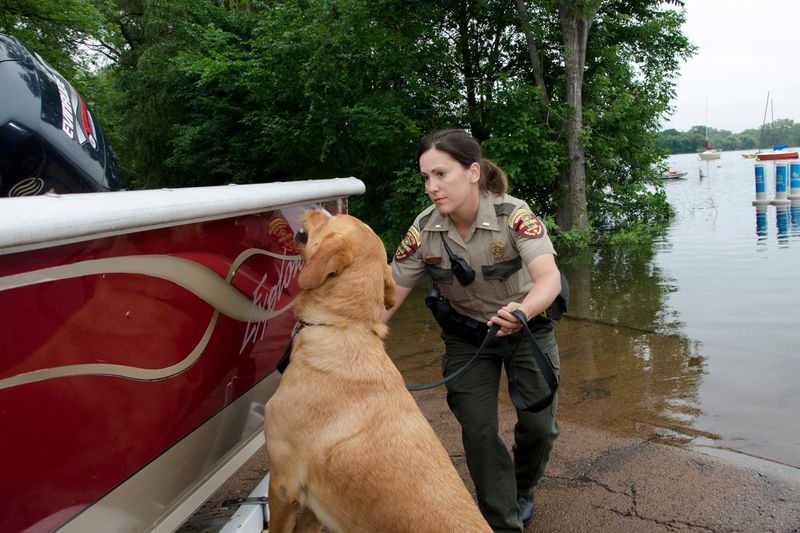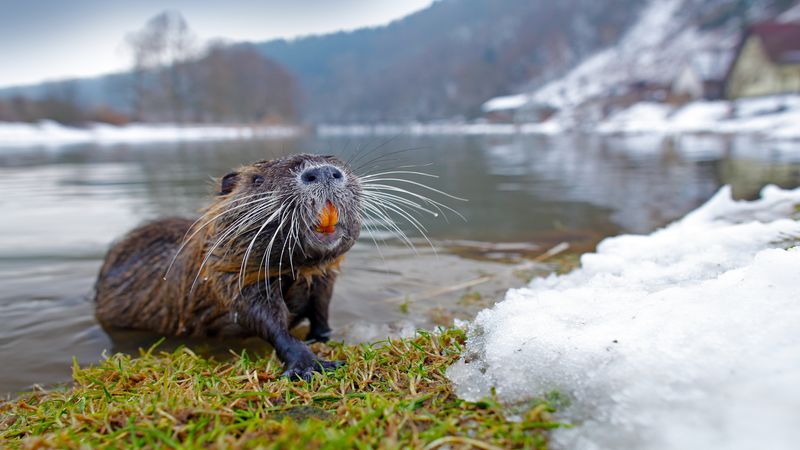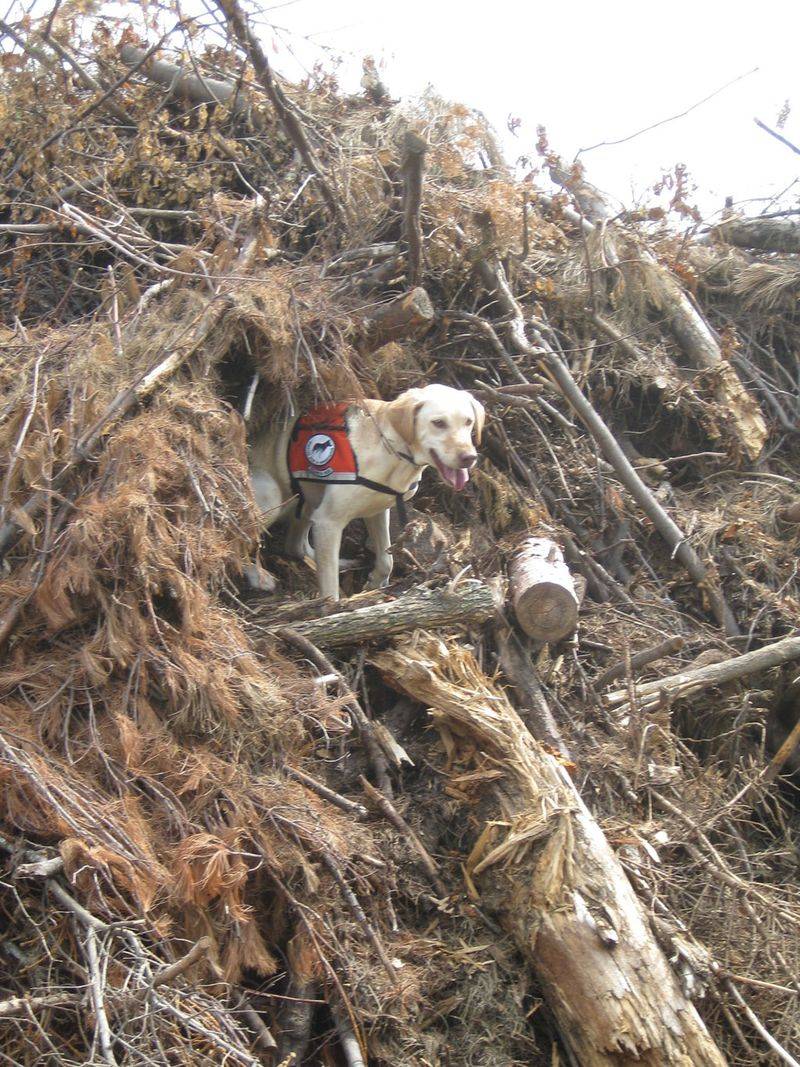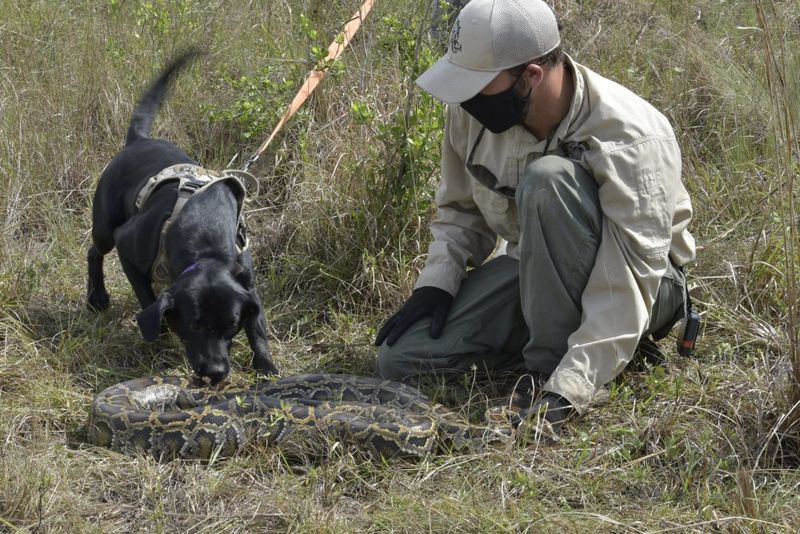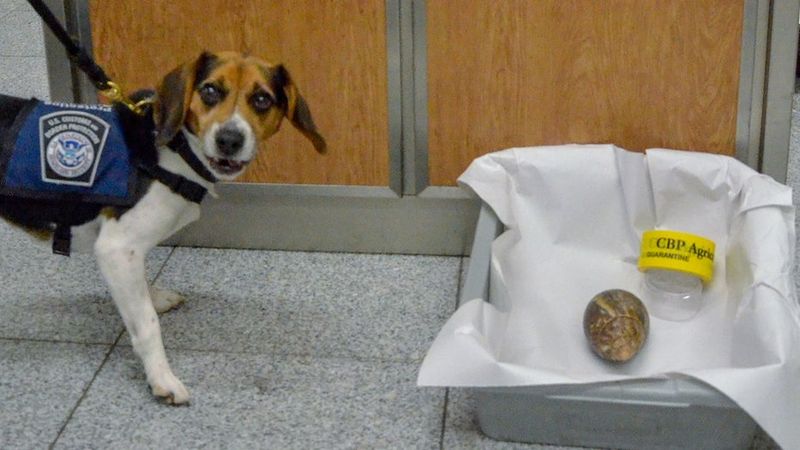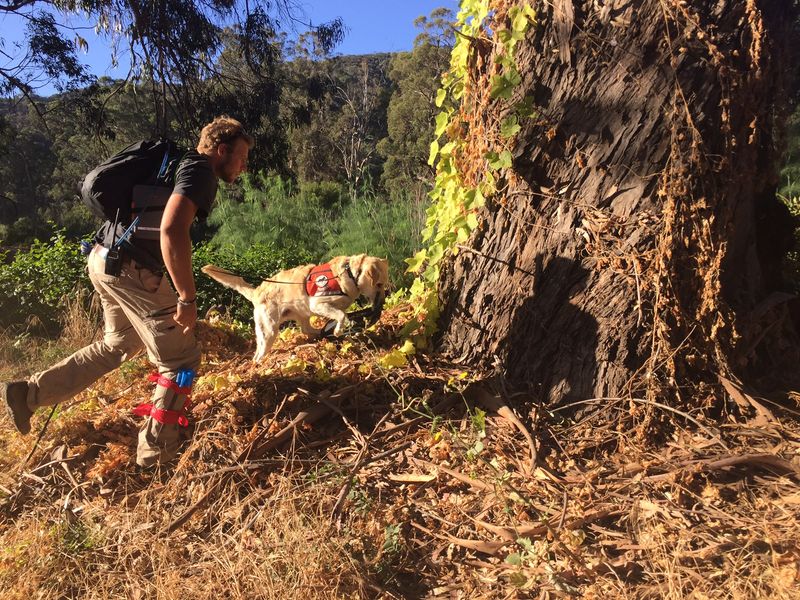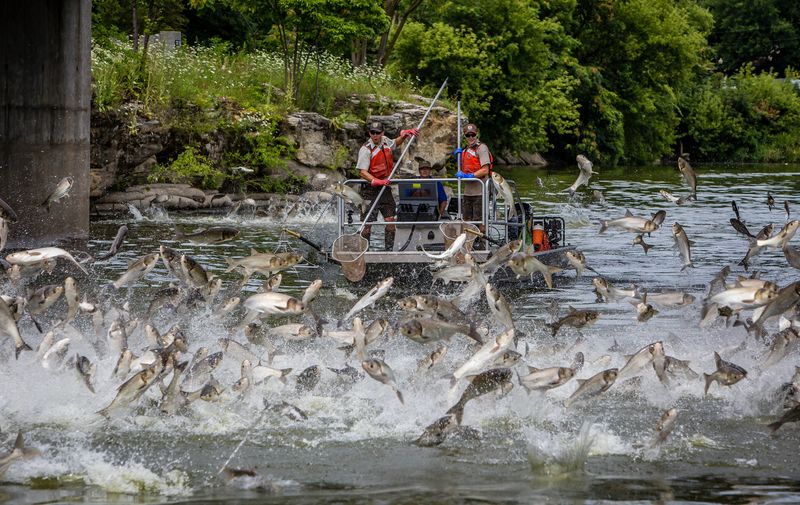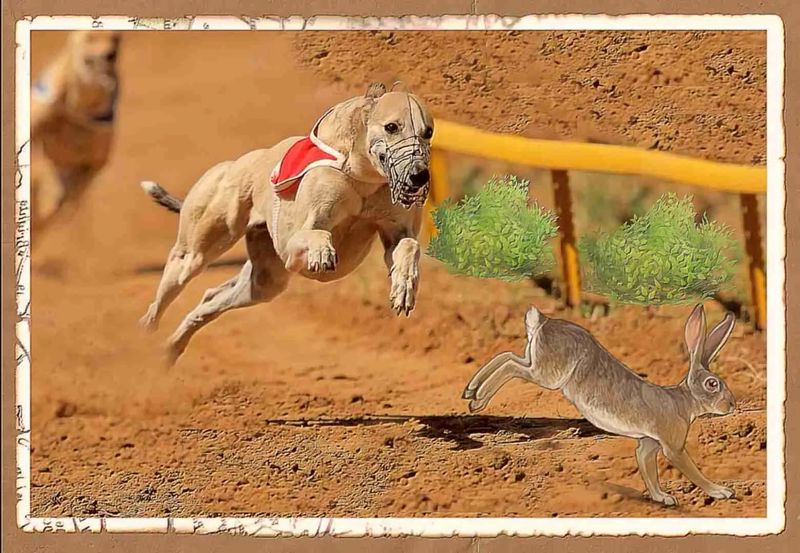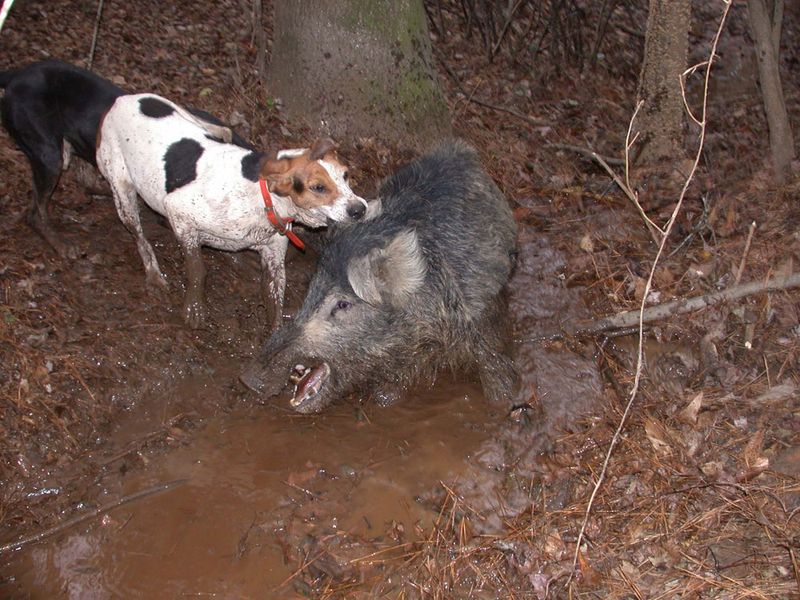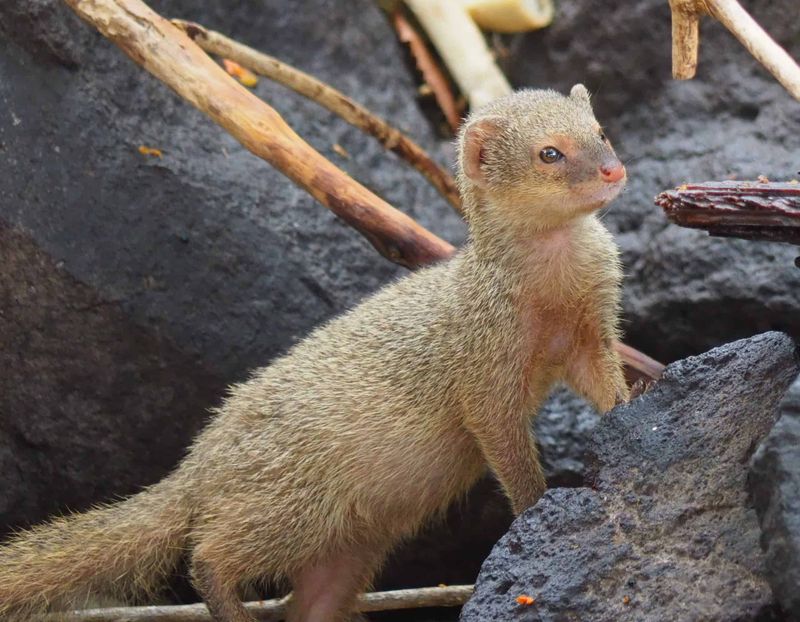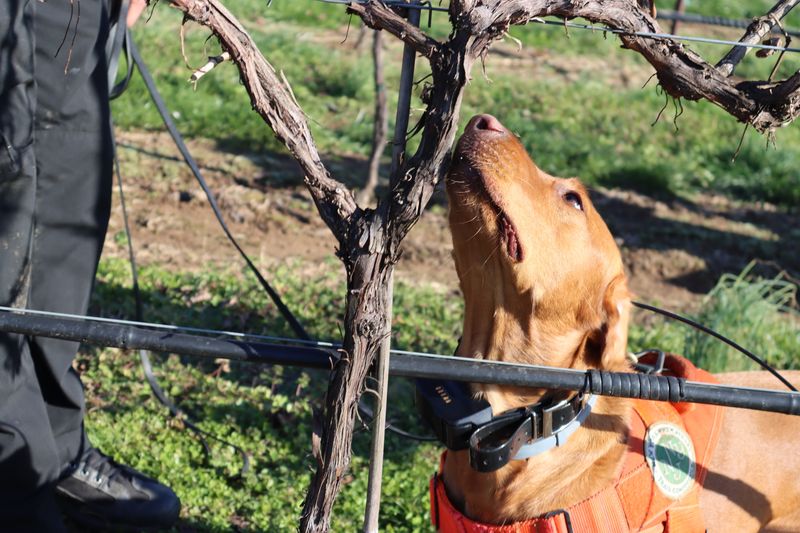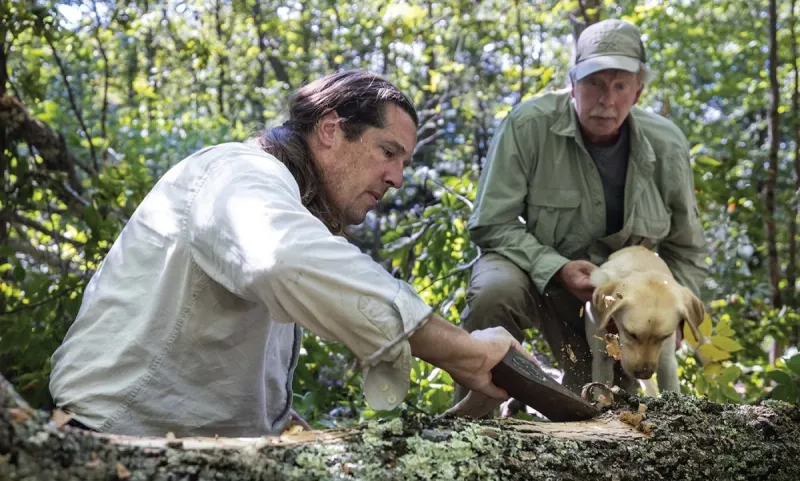Around the world, invasive species pose significant threats to native ecosystems, damaging habitats and biodiversity. Yet, in the face of this ecological challenge, an unexpected ally steps forward: our canine companions. These dog heroes, trained to track and locate invasive species, are making remarkable strides in conservation efforts. Equipped with an extraordinary sense of smell, these dogs are proving invaluable in the battle to protect native environments. This blog post explores twelve instances where dogs play a pivotal role in snuffing out destructive invasive species, showcasing their unique contributions and unwavering commitment to the natural world.
Zebra Mussels
Armed with a nose for trouble, Max the Labrador Retriever is a savior of the Great Lakes. Zebra mussels, though small, wreak havoc by clogging water pipes and damaging boats. Max, trained to detect their scent, tirelessly patrols marinas, keeping these intruders at bay.
His keen sense of smell enables him to identify even the smallest infestations, saving countless ecosystems. Max’s work ensures that these waters remain vibrant and healthy. Interestingly, zebra mussels originated from Eastern Europe, spreading rapidly across North American waterways.
Nutria
With a nose for adventure, Charlie, an energetic border collie, works tirelessly to oust nutria from Louisiana’s wetlands. These large rodents, originally from South America, damage crops and erode riverbanks. Charlie’s sharp instincts and swift movements make him an indispensable ally in controlling these pests.
His daily patrols safeguard local agriculture and prevent further environmental degradation. Charlie’s role highlights the innovative use of canines in ecological conservation.
Brown Tree Snakes
Jasper, a dedicated working dog, is a guardian in Guam’s forests. Brown tree snakes, invasive by nature, have decimated bird populations on the island. Jasper, with his unparalleled olfactory skills, detects these elusive creatures.
His interventions prevent snake overpopulation, aiding in the recovery of native species. Jasper’s work is a beacon of hope for Guam’s fragile ecosystems, showcasing the importance of canine contributions to biodiversity preservation.
Burmese Pythons
In the dense swamps of Florida, Bella, a beagle with an adventurous spirit, sniffs out Burmese pythons. These invasive reptiles threaten native wildlife, but Bella’s relentless tracking abilities help control their population.
She navigates the challenging terrain, aided by her quick wit and agility. Her efforts have been pivotal in protecting the Everglades’ delicate balance. Burmese pythons, originating from Southeast Asia, are a testament to the global nature of invasive species challenges.
Giant African Snails
Lola the terrier is on a mission in Hawaii, where giant African snails pose a significant threat to agriculture. Despite their slow pace, these snails cause rapid destruction. Lola’s acute sense of smell allows her to locate their hiding spots.
She helps farmers protect their crops, ensuring food security across the islands. Her dedication underscores the critical role dogs play in managing invasive species impacts. Giant African snails, introduced accidentally, have become one of Hawaii’s persistent problems.
Argentine Ants
In the orchards of California, Rex the terrier’s mission is to find Argentine ants. These small yet aggressive invaders outcompete native species, threatening biodiversity. Rex’s heightened olfactory senses enable him to pinpoint their colonies.
His efforts assist farmers in protecting valuable crops and maintaining ecological balance. Rex’s success story illustrates how even the smallest invaders can be tackled by our canine companions. Argentine ants, native to South America, have spread across the globe, challenging local ecosystems.
Asian Carp
In the waters of the Mississippi, Daisy, an enthusiastic retriever, helps combat the Asian carp invasion. These fish disrupt local ecosystems and outcompete native species. Daisy’s keen nose tracks their scent, aiding in targeted removal efforts.
Her energetic disposition keeps her on the move, contributing significantly to conservation missions. Daisy’s work exemplifies the power of utilizing dogs in aquatic environments to manage invasive populations. Asian carp, originally from East Asia, pose a serious threat to North American rivers.
European Rabbits
In the expansive grasslands of Australia, Milo, a clever kelpie, is on the trail of European rabbits. These rabbits, with their voracious appetites, degrade the land and threaten native species. Milo’s agility and intelligence help track and manage rabbit populations.
Through his efforts, native flora and fauna have a chance to recover and thrive. Milo’s role is a testament to the unique abilities dogs bring to conservation projects. European rabbits, introduced by settlers, have long been a challenge in Australia.
Feral Hogs
Bruno, a stalwart mastiff, patrols Texan fields to manage feral hogs. These invasive animals cause significant agricultural damage and disrupt ecosystems. Bruno’s strength and determination make him a formidable guardian of the land.
His vigilance ensures that farmers can sustain their livelihoods without undue stress. Bruno’s story highlights the diverse roles dogs can play in managing various invasive species across different landscapes. Feral hogs, with their rapid reproduction, are a persistent problem in Texas.
Mongoose
In the Caribbean, Luna, a quick-witted German Shepherd, is dedicated to controlling mongoose populations. These creatures, introduced to manage rats, have become a threat to native birds. Luna’s sharp instincts and training make her a key player in ecological restoration efforts.
Her work helps preserve the unique biodiversity of the islands. Luna’s commitment exemplifies the crucial roles dogs can hold in conservation efforts. Mongooses, though initially brought in as a solution, highlight the complexities of invasive species management.
Spotted Lanternflies
In Pennsylvania’s vineyards, Maxine, a perceptive hound, tracks the invasive spotted lanternfly. These pests threaten crops and disrupt agricultural practices. Maxine’s exceptional scent detection helps identify and manage infestations.
Her efforts support local farmers in protecting their livelihoods and preserving the state’s rich viticulture. Maxine’s story demonstrates the adaptability and resourcefulness of dogs in diverse environmental challenges. Spotted lanternflies, originating from Asia, continue to spread across the eastern United States.
Emerald Ash Borers
In the forests of the Midwest, Oliver, a tenacious bloodhound, is on a mission to detect emerald ash borers. These beetles devastate ash trees, altering entire landscapes. Oliver’s incredible tracking abilities pinpoint infested areas, aiding conservation teams.
His work is vital in slowing the beetle’s spread, safeguarding the region’s trees. Oliver’s story is a powerful reminder of the indispensable contributions dogs make to ecological efforts. Emerald ash borers, native to Asia, pose a significant threat to North American forests.
